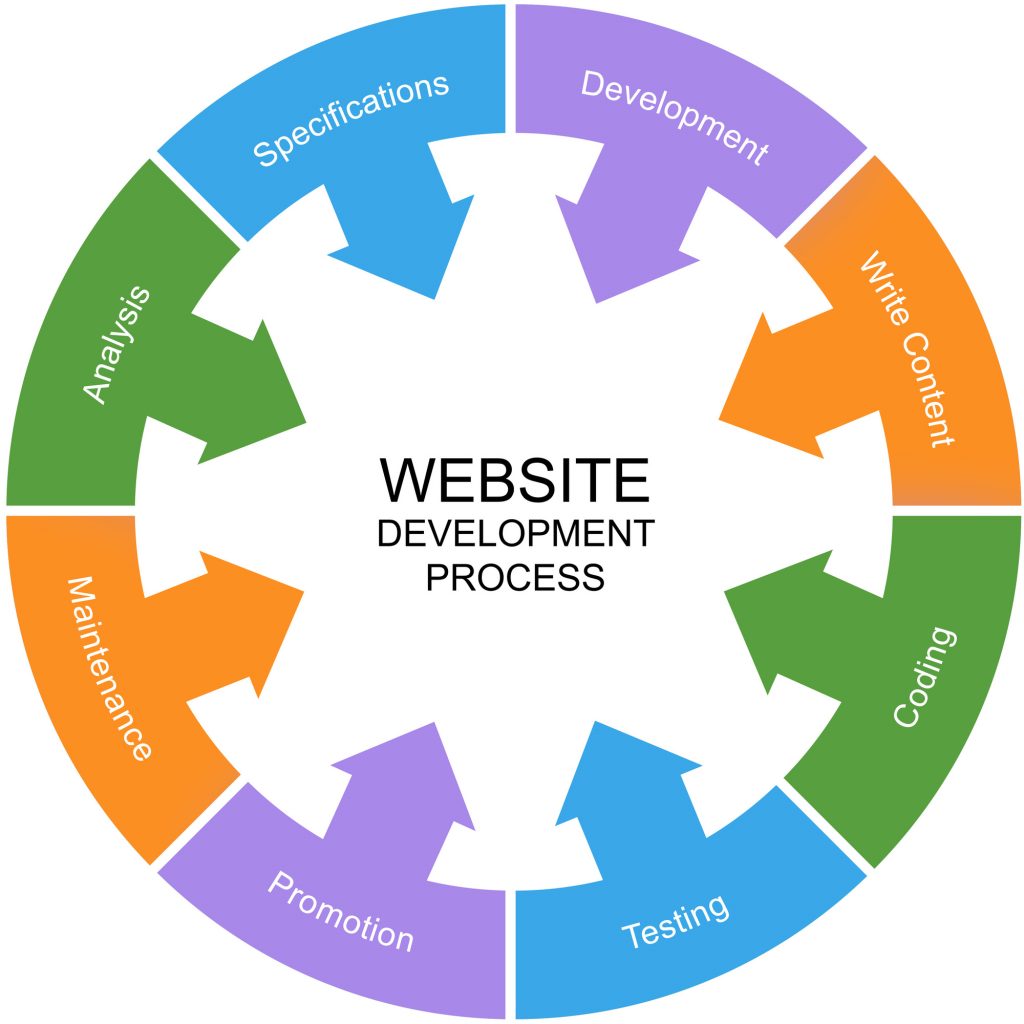// Website Design & Development
Website development is the process of creating and maintaining websites. It encompasses various aspects, including web design, content creation, coding, and server configuration. Here’s a comprehensive overview:
What is Website Development?
Website development involves building a website from scratch or improving an existing one. It includes both the front-end (what users see) and back-end (server-side functionality) development. The goal is to create a functional, user-friendly, and visually appealing website that meets the needs of its users.
Key Components
1. Front-End Development:
– HTML: The structure of web pages, defining elements like headings, paragraphs, and links.
– CSS: Styles the appearance of the website, including layout, colors, and fonts.
– JavaScript: Adds interactivity and dynamic features to the website, enhancing user experience.
2. Back-End Development:
– Server-Side Languages: Languages like PHP, Python, Ruby, or Node.js that handle the server logic and database interactions.
– Databases: Systems like MySQL, PostgreSQL, or MongoDB that store website data and allow for dynamic content retrieval.
3. Web Design:
– UI/UX Design: Focuses on creating user interfaces that are intuitive and user-friendly, enhancing overall user experience.
– Responsive Design: Ensures the website works well on various devices, including desktops, tablets, and smartphones.
4. Content Management Systems (CMS):
– Platforms like WordPress, Joomla, or Drupal that allow users to manage website content without needing extensive coding knowledge.
5. Hosting and Domain Registration:
– Web Hosting: Services that provide server space for your website files and make them accessible on the internet.
– Domain Name Registration: Choosing and registering a unique web address (URL) for your website.
Benefits of Website Development
– Online Presence: Establishes a digital footprint for businesses and individuals, increasing visibility and accessibility.
– Branding: Provides a platform to showcase your brand identity and values, helping to attract and retain customers.
– Customer Engagement: Offers a way to interact with customers through forms, chat features, and social media integration.
– Sales and Marketing: Facilitates online sales and marketing strategies, including e-commerce, SEO, and content marketing.
Popular Technologies and Tools
1. Frameworks:
– Front-End: React, Angular, Vue.js for building dynamic user interfaces.
– Back-End: Express (Node.js), Django (Python), Ruby on Rails for server-side applications.
2. Version Control:
– Git: A version control system that helps developers track changes in code and collaborate with others.
3. Development Environments:
– IDEs: Integrated Development Environments like Visual Studio Code, Atom, or Sublime Text for coding.
4. APIs:
– Tools for integrating third-party services (like payment gateways or social media) into your website.
Best Practices for Website Development
1. Planning: Define the website’s purpose, target audience, and goals before starting development.
2. SEO Optimization: Implement SEO best practices to improve search engine visibility and ranking.
3. Testing: Conduct thorough testing across different browsers and devices to ensure functionality and compatibility.
4. Security: Implement security measures like SSL certificates, regular updates, and secure coding practices to protect user data.
5. Maintenance: Regularly update content, plugins, and software to keep the website running smoothly and securely.
Conclusion
Website development is a vital process for creating an effective online presence. Whether for personal use, a business, or an organization, a well-developed website can significantly enhance visibility, user engagement, and overall success. If you have specific questions or need more information about a particular aspect of website development, feel free to ask!


